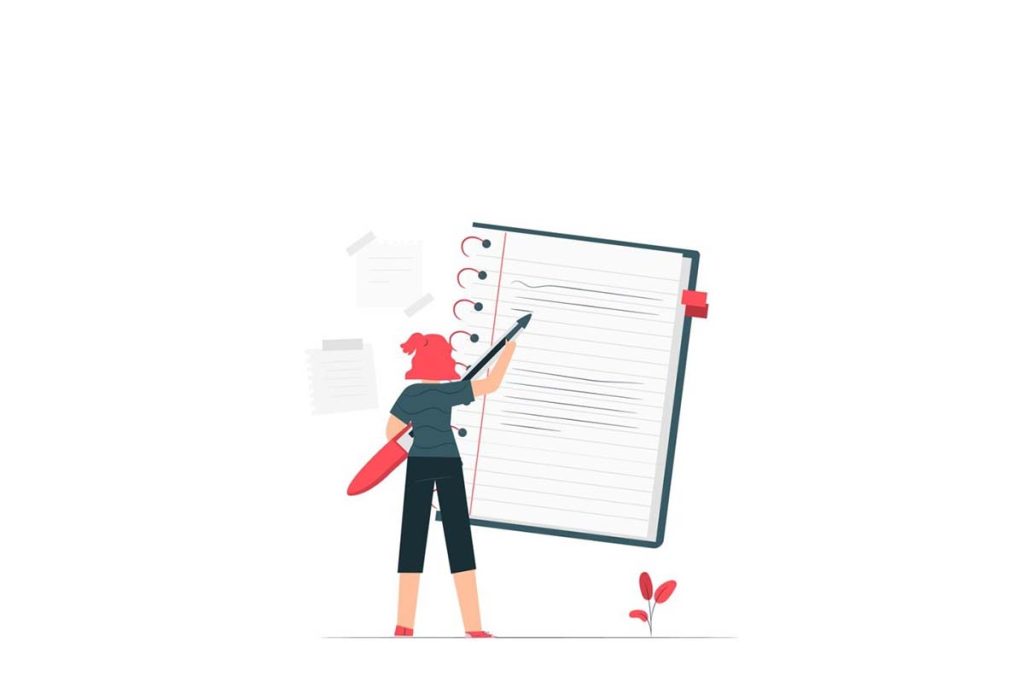During their time in college, students have to write tons of papers for different purposes. Each type of paper aims to teach them something that they can apply once they are in their respective practical fields. Among all the different types of papers, a policy paper is a particular type of paper that law students have to write as part of their law school course. If you too are a law student aiming to become a lawyer, you might be wondering how to write a policy paper. You do not need to worry. Here is the best step-by-step guide to help you learn how to write a policy paper.
What is a Policy Paper?
Policy papers are one of the most common types of writing that students have to complete in their law school courses. These papers are usually written by students who want to become lawyers and practice law on their own or in an organization, such as a government agency or nonprofit organization.
In addition to that, some policies may also be written by companies. These are companies that want to convince other organizations about why they should adopt certain policies or procedures as part of their business operations.
Unlike other academic papers, the readers of policy papers are non-academic people such as particular officials, organizations, or agencies. Besides, a policy paper usually focuses on being persuasive. A policy paper starts with a particular question, problem, or situation and argues around the same problem. But its main intention remains the same – to convince the reader that your position is correct.
Furthermore, it is important to remember that a policy paper without evidence and fact and figures are mere words. So, the writer’s argument is supported by facts and evidence to strengthen it.
The Components of a Policy Paper
There are different ways one can write a policy paper. Before we learn how to write a policy paper, we must know what are the components of a policy paper.
Amongst all the rules and regulations, the content of a policy paper remains the same. While learning how to write a policy paper, one must also know what to include in a policy paper. There are basically the following components of a policy paper.
- Abstract
- Introduction
- Approaches and Results of the Research
- Conclusion
- Recommendation
- Bibliography or References
How to Write a Policy Paper
Step 1: Start with a Problem You want to Solve

Start with a problem that you want to solve, and explain why it is important.
Explain how your research has helped solve this problem in the past. If possible, point out other people who have solved similar issues in the past (and why they were successful).
Explain why you are qualified to solve this problem as well: what expertise do you have? What skills do you possess that make your work unique or valuable? You can also talk about how many years of experience working on similar projects before this one; if there’s an opportunity for growth here, mention it!
Step 2: Research

One of the most crucial steps while writing a policy paper is its research step. In this step, you have to spend enough amount of time studying journals, news articles, books, and articles to get a strong theoretical understanding of the problem.
Then, go out and take an active part in the practical research to better understand things. While doing your research, we recommend that you should take notes and highlight any important points that you think might help you in the writing process.
Moreover, you can also take help from your supervisor or an expert in the field to make sure that the amount of time that you spend doing your research gives the best results.
Step 3: Introduce Your Proposed Solution and Explain Why You are Proposing it

Once you know what is the problem you want to target and you have dug deep to understand the problem, now you should be able to propose a solution. Because a policy paper should begin by introducing the problem you are trying to solve. Then, thoroughly explain why you think your proposed solution is best.
So, the first thing that you should do is to explain the following two things.
The problem:
- What is it?
- Why did it happen?
- How does it affect our lives?
Why:
- Why do we need this change in our policies or laws?
- How will this help us achieve a better outcome than what currently exists (or at least something close enough)?
Step 3: Present the Arguments for Your Solution
Next, your policy paper should present the arguments for your solution. You should explain why your solution is better than the other options. As well as give examples of how your solution will work in practice and how it will be implemented.
For instance, if you’re writing a budget proposal, you can also explain how funding would be obtained for the implementation of your idea or program, if necessary.
In addition, the policy paper is a good way to present your solution. But it’s important that you make sure that you have answered all of the questions and addressed all of the concerns about your proposed solution that readers might have.
Step 4: Plan Out Your Policy Paper

Planning out a policy paper is helpful because it helps you to spell out all the points you want to make. Besides, it also helps in knowing how to effectively do so in order to convince people to adopt your idea.
The process of planning includes making sure that
- your readers will pay attention and understand what you’re saying
- the main points are clearly laid out on paper so that they don’t get lost when writing the actual paper itself (this step is especially important if there are many arguments or ideas)
The best strategy that we can recommend is to take a piece of paper and a pen. Then, plan things out.
Step 5: Write Your Policy Paper

By now, we can assume that you have learned all the preparatory steps that you need to take before you start writing your policy paper. With that in mind, you are now prepared to start writing your policy paper.
A. Write the Abstract
An abstract is the first element of a policy paper. And its main aim is to convince your reader that your paper is worth their time and in-depth reading. For example, the importance of the adverse effect of traffic congestion on the inhabitants of Karachi can be a good abstract.
Moreover, it should include the following details:
- A description of the problem that you are addressing in your paper
- The thesis statement: Your thesis should not only highlight the issue but also the need for introducing changes in the present policies.
- Your recommendation for action
Moreover, we recommend you write the abstract after you have written the rest of the paper. Doing so will help you reflect back on all the important points and distill the main results from the paper.
B. Write the Introduction
The purpose of the introduction of a policy paper is to give a context and background of the problem that your paper is addressing. This is an important part of your paper as it is the first building block of your policy paper. It must provide all the information that the reader requires to comprehend the situation in which the problem is situated.
Moreover, the following details should be included:
- A concise remark on the topic that you are analyzing.
- An overview of the underlying reasons for the issue. This may be historical, but students must make an informed decision regarding the data they are adding here. They only need to give enough information to emphasize the problem’s history. And they don’t need to go into great depth.
- The consequences of the existing state of policy for the issue at hand.
An introduction based on the above example is given below.
“It is essential to stress the history of both public and private transportation in the city of Karachi. The reader’s comprehension of the present sociopolitical and economic transportation situation in Karachi will be aided by this summary. The absence of working public transportation infrastructure has left the landscape blighted by constant congestion. Therefore, it is not improbable to say that Karachi, which has a population of around 16 million, suffers from a transportation issue that has increased traffic congestion.”
C. Write the Approaches and Findings
This part of a policy paper lists the methods you have used during research and the results you have obtained. So, it should be able to pinpoint some basic conclusions. Also, it should provide details such as whether or not a particular policy is efficient or not to resolve the issue being addressed.
An example is given below:
“The issue of traffic congestion was thoroughly examined in secondary literature, as were the government’s plans for the Karachi Circular Railway. It was discovered that the project’s dire circumstances have been exacerbated by the government’s appalling funding and the lack of agreement among various political factions. Therefore, since there is no working public transportation system, traffic has only become worse.”
D. Write the Conclusion
The conclusion is basically an overview and analysis of the data you have collected. So, you should aim to write a concise conclusion based on the data you have collected. Moreover, make sure that you are covering all the necessary arguments concerning the issue.
In addition to that, you can also critique the present policy explaining how certain policy is not efficiently working.
“People have been complete to purchase private vehicles. Because there is not an affordable and efficient public transportation system, which has caused congestion. This has a negative effect on the resident’s physical and emotional health, which has decreased Karachi’s status as a livable metropolitan city. First and foremost, it is necessary to expeditiously construct projects like the Green Line and the Karachi Circular Railway in order to address this problem. Second, the government must levy a significant tax on the purchase of privately owned vehicles and motorcycles in order to deter future purchases.”
E. Write the Policy Recommendations
The last section of a policy paper is the section where you write your recommendations and a recommended policy. Its main purpose is to give a convincing and detailed of why current policies are not working effectively. Therefore, they need to be replaced.
Besides, it is not important that the policy should be the best. But you need to make sure that you are effectively presenting your argument by keeping your data in mind.
Though recommendations and conclusions are two separate sections, both should be supported by facts and figures. Moreover, the sign of a good policy is that it can be followed through specific steps to bring the required changes.
An example can be:
“What could be an effective approach to reduce Karachi’s traffic blockage? Should the government create a cost-effective public transportation system to cut down on the use of private vehicles? Should the government (in Singapore’s example) levy a large charge on personal vehicles to deter individuals from buying more cars? If you concentrate on successful techniques used in places other than Karachi, be clear about why those strategies were effective and how Karachi may benefit from them.“
Wrapping Up!
Policy papers are a great way to create change in your school or community. You can use them to discuss why certain policies should be changed, or how they should be improved. The key is to present your arguments and evidence clearly so that readers understand what you’re trying to say. Also, your arguments should be strong enough to persuade your reader why your point is better.
Though it may seem like a daunting task at first, the more you practice writing policy papers, the better your results will be. Just remember that it’s not all about the words—it’s also about how well they fit together into an engaging tone and topic that makes sense to everyone who reads it. Good luck!
You can read more about:
- How to Write a Ph.D. Research Proposal
- Powerful Debate Writing Tips and Tricks for Students
- How to Write a Dissertation Paper -The Step by Step Guide
- 10+ Tips to Help You Increase Online Sales in 2022
- How to Write a Term Paper – The Best Step-by-Step Guide
- 5 Tips on How to Avoid Grammar Mistakes in Your Essay
- How to Write an Article for Publication – Step by Step Guide to Write a Perfect Article
- Tips for Planning and Organizing Your Studies
- How to Write a Medical Case Study

